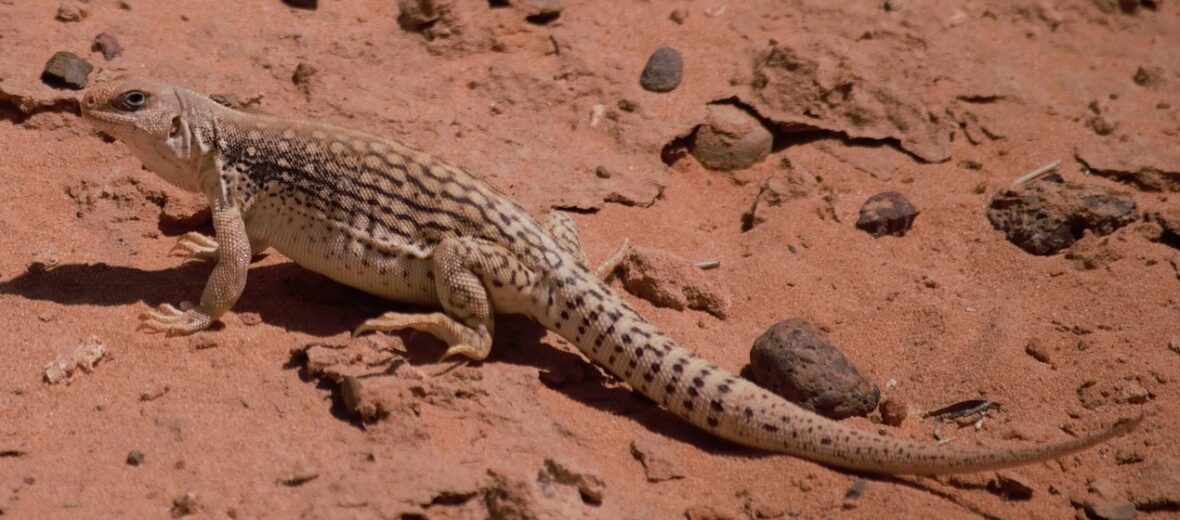
One of the most frequently encountered lizards in the Mojave and Sonoran deserts is the desert iguana. These critters reside in ranges of creosote bushes which consists primarily of dry, sandy scrublands and desert regions, as well as rocky river beds. Desert iguanas are able to withstand temperatures as hot as 115° F! If it gets too hot even for them, they construct burrows under bushes or use burrows of other animals, like the kangaroo rat, to retreat into.
First the Stats…
Scientific name: Dipsosaurus dorsalis
Weight: Up to 2.5 ounces
Length: Up to 16 inches
Lifespan: Up to 14 years
Now on to the Facts!
1.) Their primary foods are plant buds, fruit, leaves, and flowers. They will also occasionally eat insects. And as a tasty snack, they will also eat the feces (poop) of other herbivores. Yummy!
2.) The main predators of desert iguanas are: weasels, rats, foxes, birds, and snakes.
3.) If they have no place to run, they will stand their ground and inflate their bodies up to 2 times their normal size to appear larger and more threatening to predators.
4.) The males will also mark their territory via a fluorescent substance that is located in their femoral pores.
5.) Brumation (hibernation for reptiles) occurs in the colder winter months and lasts till about March.
But wait, there’s more on the desert iguana!
6.) Desert iguanas are diurnal (active during the day).
7.) When the temperature drops, they turn darker and when it’s hot out they turn lighter. The darker color helps to absorb more heat and the lighter color reflects heat.
Did you know…?
Being iguanas, they are afforded a third eye, on the top of their head. This parietal eye can sense light and dark and helps them avoid aerial predators.
8.) Desert Iguanas are polygynous (mate with more than one female).
9.) During the breeding season both the males and females get pink sides and bellies.
10.) Mating occurs in spring and summer. The female produces 1 clutch a year. Each clutch contains 3 – 8 eggs.
11.) Males show aggression and dominance by doing pushups and head bobbing. This is characteristic of iguanas.
Now a Short Desert Iguana Video!
Also, check out the Critter Science YouTube channel. Videos added frequently!
Want to suggest a critter for me to write about? Let me know here.



